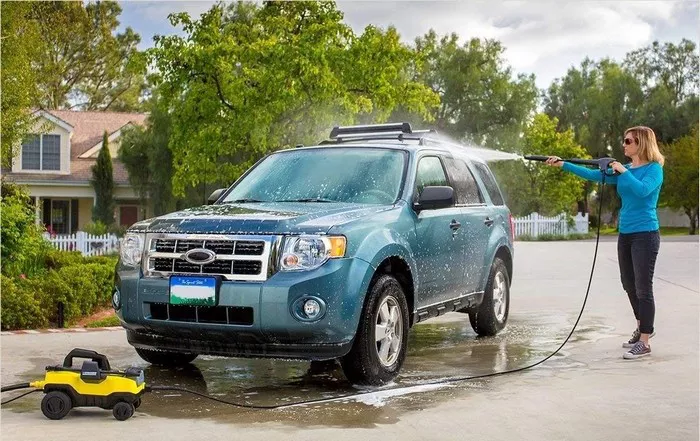When it comes to washing cars effectively, one of the most crucial considerations is the pressure at which water is expelled from the nozzle. The ideal pressure range for washing cars typically falls between 1200 to 1900 pounds per square inch (PSI). This range strikes a balance between removing dirt and grime effectively without causing damage to the vehicle’s delicate surfaces.
Most modern pressure washers come with adjustable settings, allowing users to customize the pressure output to suit their specific needs. By setting the pressure within the recommended range, users can ensure thorough cleaning without risking harm to the car’s paint or finish.
Importance of Nozzle Selection
Selecting the right nozzle is paramount when washing cars with a pressure washer. The nozzle determines the spray pattern and, consequently, the force with which water hits the vehicle’s surface. For car washing, it is advisable to use either a 25-degree or 40-degree nozzle.
A wider spray pattern, such as that produced by a 40-degree nozzle, is gentler on the car’s surface compared to narrower angles. This gentler approach helps prevent accidental damage while still effectively removing dirt and grime.
Maintaining a Safe Distance
In addition to selecting the appropriate pressure and nozzle, maintaining a safe distance between the pressure washer nozzle and the vehicle is essential. Keeping the nozzle at an appropriate distance helps prevent inadvertent damage to the car’s paint, trim, and other surfaces.
A distance of at least three feet (or more) is recommended to ensure that the water stream has sufficient dispersion and reduced pressure by the time it reaches the vehicle. This precautionary measure minimizes the risk of causing scratches or other surface imperfections.
Gallons Per Minute (GPM) Consideration
Apart from pressure, the gallons per minute (GPM) rate of the pressure washer is another critical factor to consider when washing cars. The GPM refers to the volume of water delivered by the pressure washer per minute. For car washing purposes, the ideal GPM range is typically between 1.4 to 1.6.
Exceeding this GPM range can result in unnecessarily high water pressure, which may damage the car’s paint or force water into areas where it shouldn’t be. By staying within the recommended GPM range, users can achieve effective cleaning results without compromising the vehicle’s integrity.
Additional Tips for Safe and Effective Car Washing
In addition to adhering to the recommended pressure range, selecting the appropriate nozzle, and maintaining a safe distance, there are several other tips to ensure a successful car washing experience with a pressure washer:
1. Use the widest nozzle setting: Opting for the widest spray pattern helps distribute the water evenly and reduces the risk of causing damage to the car’s surface.
2. Avoid excessive force: Refrain from applying excessive force when washing the car, as this can lead to water being forced into seals, potentially damaging rubber components or cutting through the paint.
3. Proper technique: Utilize a sweeping motion when washing the car to ensure thorough coverage while minimizing the risk of streaking or damage.
4. Preventative measures: Consider using a pre-wash detergent or foam cannon to help loosen stubborn dirt and grime before applying pressure washing.
Conclusion
In conclusion, utilizing a pressure washer for washing cars can be highly effective when done correctly. By adhering to the recommended pressure range, selecting the appropriate nozzle, maintaining a safe distance, and considering the gallons per minute (GPM) rate, users can achieve optimal cleaning results while safeguarding their vehicle’s appearance and longevity.
It is essential to approach car washing with a pressure washer with caution and attention to detail to avoid inadvertently causing damage. By following the outlined guidelines and incorporating additional tips for safe and effective car washing, users can maintain their vehicles’ pristine condition for years to come.

